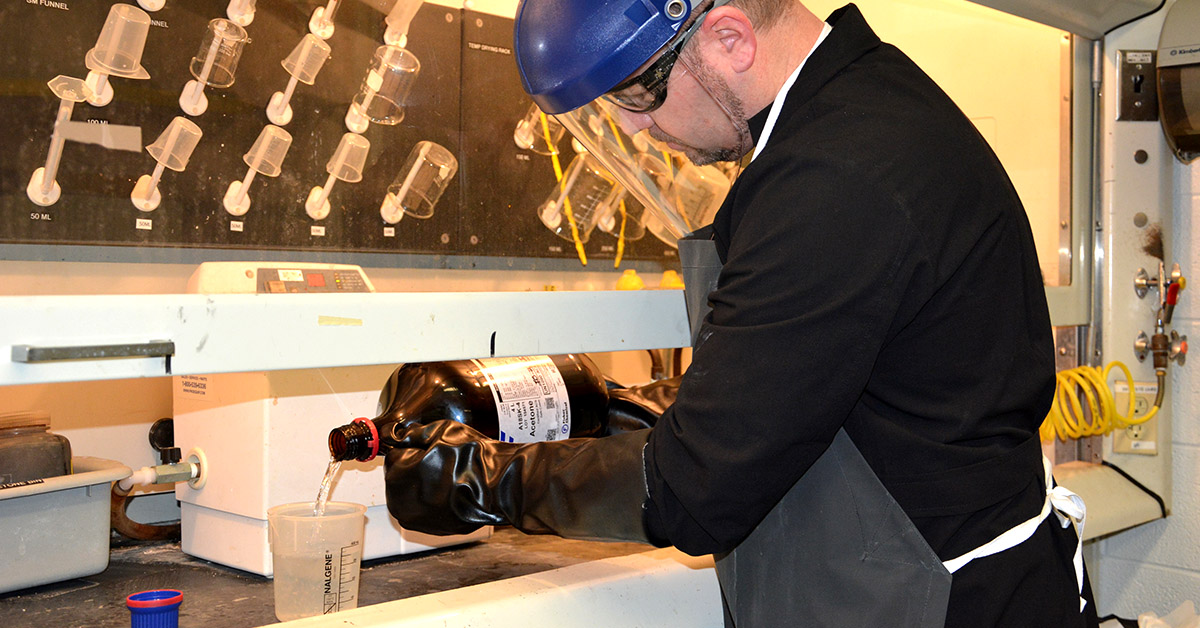People who work in labs, factories and other workplaces are at risk for developing potentially serious skin allergies to the chemicals they use and encounter on the surfaces they touch. The allergies can be so severe that workers may develop chronic skin conditions and, at times, be forced to abandon their careers. But how can employers know that their workplace housekeeping measures are working and how can work areas be easily tested to protect employees?

Researchers including Assistant Professor Susan Arnold from the School of Public Health are answering these questions with a new method they developed to set quantitative limits for a test that measures the presence of chemicals on surfaces, providing an objective way to verify the cleanliness of surfaces.
The approach, co-developed by Arnold and her toxicology colleague Bruce Naumann from BD NAUMANN LLC, is explained in an article published in the journal Toxicology and Industrial Health.
Skin sensitizers — which are chemicals that can trigger skin allergies, such as allergic contact dermatitis — may be identified by safety notices on their containers. However, it’s often unknown exactly how much chemical exposure will trigger an allergic reaction. In some cases, the concentration of the chemical at the point of skin contact may be more important than the total amount a worker encounters. Additionally, an allergic reaction can result from a series of low-level exposures over time rather than a one-time, high-level exposure.
Arnold and Naumann developed their method by first determining the level of chemicals on surfaces below which sensitization is much less likely to occur. They used published data from toxicology tests that measured immune reactions in animal models to various sensitizers. The tests were done to determine the sensitization potential of chemicals and the potency needed to trigger a reaction in animals, and possibly, humans.
The researchers used the chemical potency data and knowledge of related safety factors to develop surface wipe limits, which are quantitative thresholds for how much of the chemical could be within a 100 centimeter-squared surface area. The limits are calculated for use with a wipe test, where the surface of a work area is wiped in a prescribed way with a special cloth or swab that is sent to a lab to determine how much chemical it holds. Workplace safety professionals can use the limits and wipe test together to objectively evaluate and determine if surfaces are ‘clean’ or contaminated based on these objective benchmarks.
To aid in using the method, Arnold and Naumann used the approach to create a table of proposed surface wipe limits for a series of common sensitizers.
“In the past, companies could use safety practices to protect workers using sensitizers, such as wearing gloves or directing employees to keep an area clean, but didn’t have a way to verify that the cleaning was adequate,” says Arnold. “Now they can have an objective measure to truly know if an area is clean enough for workers to keep them healthy.”
Arnold and her colleagues are presenting a webinar on the wipe surface limits and wipe sampling on Dec. 6 for industrial hygienists, occupational physicians, and other professionals to discuss wipe surface limits, its underlying research, sampling practices, and other important aspects of the approach.

